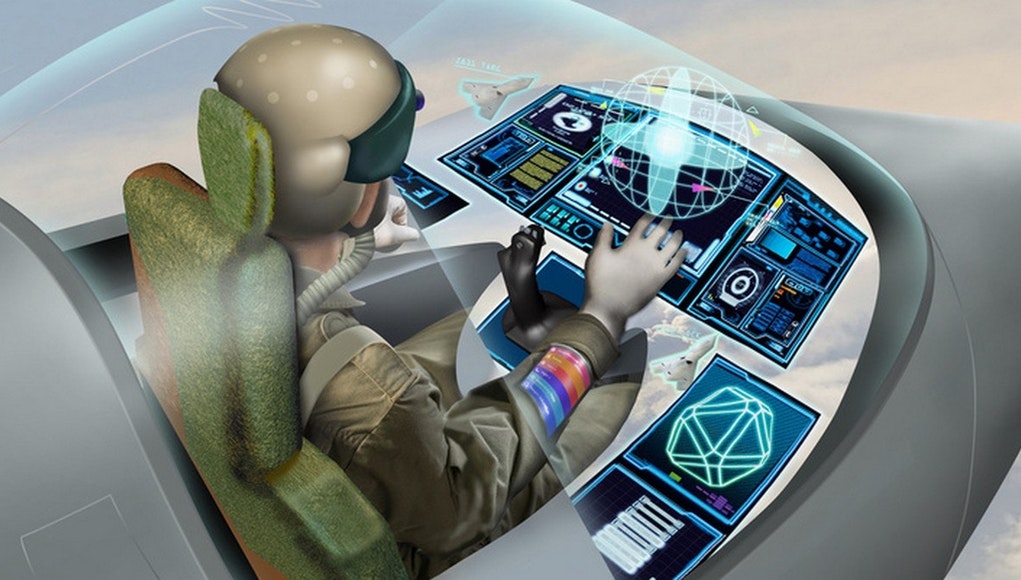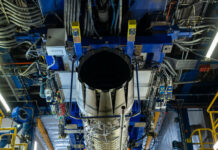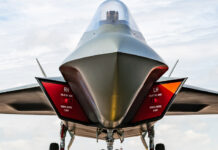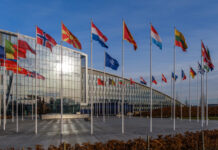Two groups of European states are working on the development of a Future Combat Air System programme. The UK-led programme is progressing more rapidly than the Franco-German one, but the completion of the two remains far from being achieved, thus the prospect of a possible merger has been raised.
In the last five years, six European countries decided to join the race of next generation fighters and work on a Future Combat Air System (FCAS). On the one hand, the UK, Italy, and Sweden, are developing a system-of-systems called TEMPEST with an eponymous fighter at its core. On the other, Germany and France, joined by Spain, have committed to the development of a Future Combat Air System/Système de Combat Aérien du Future (FCAS/SCAF) that includes a New Generation Fighter (NGF). The two programmes are to be developed in a similar timeframe, but their technical features, and especially their status, do not go in the same direction.
TEMPEST
After the unveiling of a full-scale concept model at the 2018 Farnborough Air Show, the UK, Italy and Sweden signed a Memorandum of Understanding for the development of a next-generation fighter in December 2020. The document outlines cooperation on R&D and establishes a €6Bn-worth, equally shared conceptualisation of the programme. It also schedules the launch of a Concept and Assessment Phase in 2021, followed by a full development phase to begin as of 2025. The TEMPEST fighter at the heart of the programme is expected to reach Initial Operation Capability (IOC) by 2035.
Progress to Date
In July 2021, the British Defence Minister signed a £250M (€295M) contract with the so-called Team TEMPEST, led by the British BAE Systems and Rolls Royce, with the participation of Leonardo UK and MBDA UK. This marked the on-schedule launch of the Concept and Assessment phase, mainly focused on the development of relevant sensor fusion. The idea is to provide TEMPEST with the capacity to act as a flying C2 node for the other assets operating within the same system-of-systems, similarly to what happens with Lockheed Martin F-35 fighters.
Lessons learned with the development of this latter and previous development programmes will be taken into consideration, as confirmed by British officials during the 2019 DSEI conference. A mock-up of the TEMPEST fighter and of two unmanned jet models supposed to fly together in formation were unveiled at the 2021 DSEI exhibition in London. In speeches delivered at that time, British experts reaffirmed that participating companies were not in a rush to fly a demonstrator or to lock down the design. Rather, the Team preferred to focus on developing relevant technologies and capabilities through model-based system engineering and design. On that occasion, Air Commodore Jonny Moreton, the director of the future combat air programme at the Royal Air Force, affirmed that the “digital engineering revolution” will help “to break the forty-year cycle” usually needed for the conception, development, and construction of a new programme, thus helping to reduce the development cycle to ten to fifteen years. To maximise the programme’s efficiency, Team TEMPEST will also work on how to “future proof” the programme. The idea is to solve one of the main issues usually affecting complex and long-lasting development programmes: the fact that operational requirements are usually identified in early stages and then considered as granted, meaning that aircraft might finally be outdated when fielded.
By boosting the role of digital technologies, TEMPEST partners seek to include ambitious experimental systems while managing costs and keeping deadlines. Leonardo UK will be in charge of the TEMPEST’s Multi-Function Radio Frequency System (MFRFS) data collection protocols, expected to be “four times as accurate as existing sensors in a package 1/10th the size”, according to the company. The MFRFS’ onboard processor suite will allow for filtering the information gathered on the battlefield to generate its dynamic picture. The British branch of the Italian company will be in charge of leveraging and repackaging commercial technologies such as 5G networks to reduce the size and weight of sensors and the energy needed to power them.
Programme Features
Team TEMPEST is also tasked with the development of a “wearable cockpit” interface, to replace analogic and digital inputs with an augmented reality display, supported by a network of Artificial Intelligence (AI) features.
Rolls Royce is working on the “Integrated Power System” (IPS), a hybrid system that will combine gas turbines and on-board electrical systems. The IPS will serve as a “flying power station” for sensors, avionics and directed energy weapons. The engine is intended to generate ten times the electrical power as the Eurofighter TYPHOON. AI simulator tools will be used to design thermal flows and hotspots. According to the company, the use of AI, simulators and hardware testing might help to reduce the development time by 50 per cent.
Unorthodox technologies are also expected on the weapons loadout, which might include directed energy weapons, in addition to hypersonic missiles. Advancements are also reported on Project Alvina, focused on defining the scheme to deploy small drones in swarms, and on the Intrepid Mind Robotics’ modular MOSQUITO airframe, to allow for five different wing shapes to be interchanged with a fuselage in 10 minutes.
Costs vs Benefits for the UK
In 2021, a Command Paper submitted to the British Parliament reiterated that the TEMPEST fighter will be among the major procurement programmes of the next decades. On the one hand, it will allow the country to exploit its industrial base to develop a UK-centred system. On the other, it will help in modernising the base, as the use of disruptive technologies will increase the production pace while lowering costs. According to a PWC report, the programme will have a significant impact on the British economy, with a contribution of £26.2Bn (€30.8Bn) between 2021-2050, set to reach £100Bn (€118Bn), including partners and the supply chain. Moreover, the programme is supposed to support about 21,000 employees per year.
The UK has almost fully funded the initial phases of this joint programme so far. The Italian multiannual defence planning document (Documento Programmatico Pluriennale della Difesa) for 2021-2023 devotes €2Bn to the programme’s R&D in line with the 2018 MoU. However, the amount is distributed over the next 15 years, with only €60M to be invested in the next three years, the biggest instalment being scheduled from 2027.
Concerning Sweden, Saab, as the main contractor, established a centre of excellence to research relevant technologies in 2020 and was recently contracted to conduct preparatory studies concerning the development and the realisation of future combat air capabilities. However, the SEK250M (€24M) deal signed on 1 June with the Swedish Defence Materiel Administration (FMV) is intended to benefit not only the cooperative programme with the UK and Italy, but also the national-produced GRIPEN fighters. Indeed, Stockholm has not yet committed to participate in the development of the TEMPEST fighter.
All this considered, the UK might be forced to reorganise its procurement priorities, especially concerning the F-35 programme. As the only Level 1 partner, London was initially expected to purchase 138 fighters, but only 48 have been ordered so far. The MoD is expected to place additional orders, but this might remain beyond the expected number of units.
The Franco-German FCAS Programme
While the UK is progressing well and on schedule with the development of the TEMPEST programme, the FCAS is lagging behind mainly due to skirmishes between main industrial partners.
In 2017, France and Germany, later joined by Spain, agreed on the development of a cooperative Future Combat Air System (FCAS), with first technological demonstrators expected in 2026, then delayed to 2027, for a final commissioning in the 2040 timeframe. Berlin and Paris signed the two year-long, €65M-worth Joint Concept Study in February 2019, and Spain officially joined the programme some months after. Due to diverging political priorities between France and Germany, however, the launch of the 18 month-long, €155M worth Demonstrator Phase1A, crucial for the development of the New Generation Fighter (NGF), at the core of the FCAS system-of-systems, took place one year beyond schedule, in April 2021. To keep 2027 as the deadline for the first demonstrators, partner countries were required to rapidly find a deal on the Demonstrator Phase1B, to build up on the previous phase and mark the official debut of Spain in the programme.
Intergovernmental negotiations between France, Germany and Spain ended in May 2021, when countries agreed to pledge €1.2Bn each for Phase1B, to last until 2024. They accepted to continue their collaboration and launch Phase2, with investments for up to €8.6Bn (or even more) until 2027, when a demonstrator is expected to be ready. However, the contract that relevant companies and the French directorate general of armaments (Direction générale de l’armement, DGA) are required to conclude for outlining the conditions and the detailed funding scheme for this Phase has not been signed yet, thus putting the completion of the whole programme at risk.
Partner Disputes
As extensively analysed in ESD issue 06/2022, the management of intellectual property rights was at the core of the debate concerning the 1A Phase. Germany asked France for access to all co-funded research in the light of an increased Airbus participation due to Spain entering the programme, but Dassault Aviation refused to share the know-how acquired with the development of other programmes, such as RAFALE. The comprehensive listing of all intellectual property rights to be necessarily shared for the completion of cooperative projects allowed for differences to be overcome and to kick off that phase. On similar grounds, the workflow share is the main cause of the stalemate on Phase1B, still ongoing at time of writing. Airbus is reported to be blocking the final signature of the contract for this phase as it seeks an equal role with Dassault in the development of the fighter, without making concessions in other technological pillars. As a reminder, the whole FCAS programme consists of seven technological pillars:
- fighter (New Generation Fighter, NGF)
- engine
- combat cloud
- remote carrier
- missile system
- sensors system
- stealth
Each one is to be led by one of the three main contractors according to the “best athlete” principle. The development of the NGF was initially assigned to Dassault Aviation, with Airbus Defence and Space as main partner. The German company leads the remote carrier, combat cloud and stealth pillars. The Spanish Indra is the lead company on the sensor systems, while the European military engine team (EUMET, a 50/50 joint venture between the French company Safran and the German MTU) is in charge for the engine, in partnership with Spain’s ITP Aero, a Rolls-Royce Group owned corporate entity.
Due to partial overlap in contracts for the different pillars, the whole programme is suffering from delays, and real progress might be registered only on the engine. Last January, the DGA announced that the prototype engine derived from the Snecma/SafranM88 currently powering RAFALE’s fighters was successfully tested thanks to the heat-sensitive paint Thermocolor, which allows it to measure the temperature due to colour changes. The prototype will pass “durability” tests in several months.
Does a Merger Between the Two Programmes Make Sense?
In November 2021, Italy’s Air Force Chief of Staff, General Luca Goretti, said that the TEMPEST and the FCAS programmes might eventually merge. Indeed, the programmes share a similar expected delivery timeframe (between 2035 and 2040) and are both inspired by the F-35’s system-of-systems philosophy. In the next paragraphs, we will try to assess which political, military, and industrial considerations might justify (or not) the merger of the two programmes.
Considerations in Favour
Being Level 1 and Level 2 partners in the F-35 programme, respectively, the UK and Italy are among the European countries that have acquired the most relevant experience in 5th generation fighters, in both industrial and “philosophical” terms. British companies are in charge of building or developing about 10 to 15 per cent of the components of each fighter. For instance, BAE systems collaborates with Lockheed Martin in the development of the latest software updates. As part of the close collaboration between the US and the UK on this programme, UK engineers and test pilots have participated in the Joint Strike fighter programme since its very beginning. For instance, British and US pilots have validated together the first prototype in 2001. Both Italian and British F-35s reached the land IOC in 2018, and the British ones reached the maritime IOC in 2020. However, this know-how alone is insufficient for developing a next generation fighter from scratch but gives the two countries a more practical understanding of what flying a 5th generation fighter brings to the battlefield. Indeed, the added value of fighting a next-generation fighter goes beyond its remarkable technical capabilities, such as advanced stealth and exceptional manoeuvrability. Sensor fusion is one of the most crucial features of next generation fighter programmes, and the UK would be the country with the most relevant first-hand experience, followed by Italy.
The Wider European Situation
With defence spending increasing once again among Western countries after decades of underfunding, several armed forces will need to modernise their inventories and to purchase new weapon systems. Some European countries have already chosen between the F-35 (Finland, Switzerland, Belgium, Poland, Denmark, Norway, and the Netherlands) and RAFALE (Croatia and Greece), but export opportunities within and outside Europe are more significant than in the past. By reducing competition among the most important European companies in the aerospace sector, a merger of the two programmes might help to maximise the positive results of this window of opportunity. The fact that the Italian company Leonardo acquired a 25.1 per cent stake in the German Hensoldt might be an interesting driver for reducing competition, as this would increase commonalities in the radar systems for the two programmes.
A merger would also increase defence cooperation among participants, with France and the UK probably being the countries set to benefit the most. Since the signature of the Lancaster House Treaties in 2010, Paris and London committed to strengthen their collaboration in numerous sectors, including high-value, complex weapons. Considering the positive results obtained, especially on armed forces’ interoperability, the two partners reaffirmed their willingness to push cooperation forward at the 2018 Sandhurst summit. They agreed to continue joint efforts on the development of Future Cruise/Anti-Ship weapons (FC/ASW), aimed at replacing French SCALP and British STORM SHADOW airborne cruise missile on the one hand, and EXOCET and HARPOON maritime missiles on the other.
They also committed to jointly assess the “emerging conclusions before decisions are taken on future phases” of the development of respective future combat air systems. “We will also pursue opportunities for Combat Air cooperation, and our capability analysis of the Future Combat Air Environment including how manned and unmanned systems might operate together and establish a high level of interoperability across the most important European Air Forces”, the final declaration of the 2018 summit states.
Considerations Against
If industrial and military considerations might justify a merger, there are relevant political and strategic arguments in favour of keeping two separated programmes. Both the British-led and the Franco-German FCAS programmes are intended to increase the strategic autonomy of participating countries and keep them in the race for next generation fighters. However, the UK seeks to find a solid balance between capabilities and time needed for development, while Germany and France seem more focused on finding the best technical features possible rather than in timing. The first results of these different views can already be observed: while Team TEMPEST has already progressed well in the development, R&D for the other programme is lagging behind. Consequently, it is hard to imagine that merging the two projects will allow the different parties to reach their respective objectives, especially considering the negative outcome of past cooperative programmes, such as the A400M. Indeed, as the number of participants increases, the timing and technical capabilities will be increasingly negatively affected, as finding a compromise among participants might become extremely difficult.
Strategic Difficulties
Brexit and European defence are another important factor to keep in mind. It is well known that France is the EU country that pushes the hardest for developing a stronger EU defence, while the UK has historically blocked stronger cooperative efforts. Not surprisingly, several examples of progress on joint EU defence have been made after Brexit. It is still too early to assess their real impact, but the recent international developments have convinced EU countries of the need to gain more strategic autonomy through joint defence programmes. Kicking off a new cooperative programme with a non-EU country might undermine the results obtained so far, and will be complicated by the new legal framework in place.
In a similar context, the participation of third countries to the programme and the export policy to follow might be significant obstacles to a merger. Collaboration with non-European countries is not taboo for TEMPEST members. The Japanese Government is considering picking BAE Systems instead of Lockheed Martin to support Mitsubishi Heavy Industries in the development of the country’s F-X next-generation fighter. Japan and the UK are already collaborating on engine parts and sensor technologies for their respective next generation fighters. Moreover, India might be invited to join the programme as part of a bilateral agreement to strengthen cooperation, and which includes transferring advanced technology to produce fighter jets. Considering that the FCAS/SCAF programme is conceived as being European, combined with the fact that quarrels about know-how and workflow shares are continuing, and that Germany has stricter export rules compared to other countries, the participation of third countries represents a major obstacle to a merger.
Final Remarks
The race for European next generation combat aircraft is far from being over, and success is not guaranteed. Considering the status of the two programmes, the British FCAS is more likely to succeed. The use of disruptive technologies to speed up the different development phases will probably be an effective approach, but funding might be a main obstacle for the conclusion on the programme. For the time being, the FCAS/SCAF is at stake, as skirmishes among the main contractors will likely continue for the whole duration of the programme. In an interview given on 7 June during the Paris Air Forum, Dassault’s CEO Eric Trappier declared that the FCAS/SCAF will likely be delayed by ten years. He also recalled that France might therefore find alternatives, which might include continuing the modernisation of the RAFALE fleet to extend its operational life. All this considered, a merger between the two programmes, which might make sense in mere industrial terms, will lack the sufficient political support, and will probably prove ineffective.












